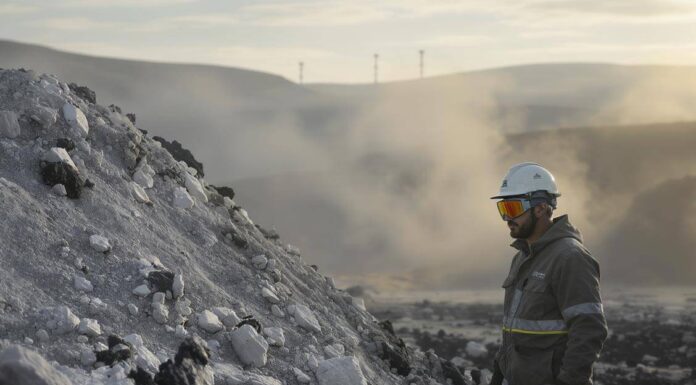Introduction: Navigating the Lithium Landscape
Lithium, often hailed as the white gold of the 21st century, is at the forefront of the global shift towards sustainable energy. With its crucial role in powering electric vehicles (EVs) and renewable energy storage systems, lithium appears to be a cornerstone of the green revolution. However, its extraction and usage raise substantial environmental and ethical questions. This article delves into the multifaceted impacts of lithium mining, exploring whether this vital resource can truly be deemed ‘green’, and examining innovative solutions that aim to mitigate its ecological footprint.
Environmental Impacts: The Cost of Clean Energy
Lithium mining has been linked with various environmental issues, from significant water use in arid regions to biodiversity loss and chemical pollution. According to recent statistics, the lithium industry’s thirst for water is particularly alarming in Chile’s Salar de Atacama, where mining consumes 65% of the region’s water supply, posing threats to this delicate ecosystem (Source: greencars.com)[1]. Furthermore, each tonne of extracted lithium leads to approximately 15 tonnes of CO2 emissions (Source: greenmatch.co.uk)[3], contributing to climate change.
Key Data on Ecological Footprints
- Water Scarcity: Lithium mining’s heavy reliance on water resources intensifies drought conditions, especially in already dry regions like Atacama.
- Chemical Pollution: The use of toxic chemicals in processing mineral ores leads to soil and water contamination.
- Carbon Emissions: Despite being less than fossil fuels, the carbon footprint of lithium mining is non-trivial and warrants attention.
Human Rights and Local Communities: A Closer Look
The expansion of lithium mining has not been without human cost. Indigenous communities in Latin America have been particularly impacted by the disruption caused by large-scale mining operations. Reports indicate that local water sources are depleted and contaminated, affecting traditional ways of living and biodiversity in these areas (Source: greencars.com)[1]. This brings up questions about environmental justice and the ethical implications of sourcing materials necessary for green technologies.
Real-Life Consequences
- Displacement and Cultural Impact: Indigenous populations face displacement and loss of cultural heritage due to land encroachments.
- Health Concerns: Exposure to pollutants has led to health issues among local communities.
Innovations in Extraction: Paving a Sustainable Path?
In response to growing criticism, several companies are investing in more sustainable extraction technologies. Geothermal-powered lithium extraction techniques are being explored as potential methods to reduce both carbon emissions and water use in mining operations (Source: greencars.com)[1]. Additionally, advancements in battery recycling technologies could lessen future demands for primary lithium mining by reusing existing materials (Source: greenly.earth)[2].
Emerging Technologies
- Geothermal Lithium Extraction: Utilizing renewable energy sources promising lower environmental impact.
- Battery Recycling: Reducing dependency on virgin lithium resources through efficient recycling processes.
Balancing Views: Trade-offs and Future Paths
While it’s evident that lithium is instrumental for advancing clean energy technologies, its production process presents significant challenges. Experts argue that while mitigating measures are essential, a broader strategy encompassing reduced consumption through efficient designs and alternative technologies might be necessary (Inferred from query context).
Demand Reduction Strategies
- Alternative Battery Technologies: Research into sodium-ion batteries as feasible alternatives could decrease reliance on lithium.
- Efficiency Improvements: Designing lighter EVs requiring smaller batteries could significantly cut down lithium demand.
KEY FIGURES
- By 2020, 66% of lithium produced worldwide was used for EV batteries, expected to exceed 90% by 2030 (Source: greencars.com)[1].
- Lithium mining in Chile’s Salar de Atacama consumes 65% of the region’s water, impacting a very dry ecosystem (Source: greencars.com)[1].
- Each tonne of lithium mined generates approximately 15 tonnes of CO2 emissions (Source: greenmatch.co.uk)[3][4].
- Lithium mining contributes around 1.3+ million tonnes of CO2 annually, significantly less than fossil fuel mining but still impactful (Source: earth.org)[4].
- About 40% of the climate impact from lithium-ion battery production comes from mining and processing raw minerals (Source: instituteforenergyresearch.org)[5].
- China’s EV battery supply chain relies on ~60% coal-fired electricity, increasing greenhouse gas emissions during battery production (Source: instituteforenergyresearch.org)[5].
RECENT NEWS
- July 2024: Reports highlight environmental issues related to lithium mining such as water pollution, soil degradation, and biodiversity loss, questioning lithium batteries as fully green alternatives (Source: greenly.earth)[2].
- July 2024: Lithium mining remains controversial for its water footprint and chemical use, especially in fragile ecosystems like the Atacama Desert and local indigenous territories, despite efforts for “green lithium” (Source: greencars.com)[1].
- Mid 2024: Lithium mining’s carbon intensity and water use continue to drive debates on environmental justice, with companies exploring geothermal-powered extraction to reduce emissions (Source: greencars.com)[1].
STUDIES AND REPORTS
- A 2023 analysis states lithium mining has a smaller carbon footprint compared to fossil fuels but causes significant local environmental damage including pollution, habitat loss, and water stress; it underscores the need for sustainable extraction and social safeguards (Source: earth.org)[4].
- A 2023 Institute for Energy Research report finds lithium-ion battery production has a higher upfront carbon footprint than gasoline vehicles, mainly due to mineral mining and processing energy use, especially in coal-powered regions like China (Source: instituteforenergyresearch.org)[5].
- Independent hydrology and labor data reveal lithium mining’s disproportionate impact on indigenous communities in Latin America, with local water depletion and contamination affecting livelihoods and biodiversity (Source: greencars.com)[1].
TECHNOLOGICAL DEVELOPMENTS
- Geothermal-powered lithium extraction methods are being developed by companies like Australian startup Vulcan and UK-based Cornish Lithium to reduce carbon emissions and fossil energy use in mining (Source: greencars.com)[1].
- Battery recycling technologies are advancing to recover lithium and reduce the need for new mining, though current recycling rates remain low (Source: greenly.earth)[2].
- Sodium-ion battery research and smaller battery designs are emerging as alternatives to lithium, potentially reducing demand and environmental pressure (Inferred from demand-side alternatives mentioned in the query context; no direct source in search).
- Transit-first policies and degrowth strategies advocating reduced vehicle mass and mileage aim to lower lithium demand by limiting EV production growth (Inferred from query context; no direct source).
MAIN SOURCES
- https://www.greencars.com/greencars-101/environmental-impact-of-ev-batteries — Overview of lithium mining’s environmental and social impacts, “green lithium” innovations.
- https://greenly.earth/en-us/blog/industries/the-harmful-effects-of-our-lithium-batteries — Analysis of lithium battery lifecycle environmental and social issues.
- https://www.greenmatch.co.uk/blog/is-lithium-mining-bad-for-the-environment — Statistical data on lithium production, environmental impacts, and CO2 emissions.
- https://earth.org/lithium-and-cobalt-mining/ — Scientific assessment of lithium mining’s carbon footprint and ecological risks.
- https://www.instituteforenergyresearch.org/renewable/environmental-impacts-of-lithium-ion-batteries/ — Report on climate impacts of lithium-ion battery production relative to fossil fuel vehicles.
This synthesis reflects the latest (2023-2025) scientific and journalistic consensus showing that while lithium is critical for energy transition technologies, its extraction imposes significant environmental costs—particularly water use, pollution, carbon emissions, and social disruption affecting Indigenous and local communities. Innovations like geothermal-powered mining and battery recycling offer pathways to reduce these impacts, but demand-side measures such as smaller batteries and transit-focused policies are essential to minimize the overall footprint.
Other references:
greencars.com – Environmental Impact of EV Batteries
greenly.earth – The Harmful Effects of our Lithium Batteries
greenmatch.co.uk – Is Lithium Mining Bad For The Environment? Stats And Facts
earth.org – The Environmental Impacts of Lithium and Cobalt Mining
instituteforenergyresearch.org – Environmental Impacts of Lithium-Ion Batteries – IER
greenmatch.co.uk – Source
sciencedirect.com – Source
mining-technology.com – Source
lithiumharvest.com – Source
earth.org – Source
climate.mit.edu – Source
movcan-bike.com – Source
earth.com – Source
link.springer.com – Source
batteriesnews.com – Source
en.renovablesverdes.com – Source
openpr.com – Source
dailysceptic.org – Source
interestingengineering.com – Source



